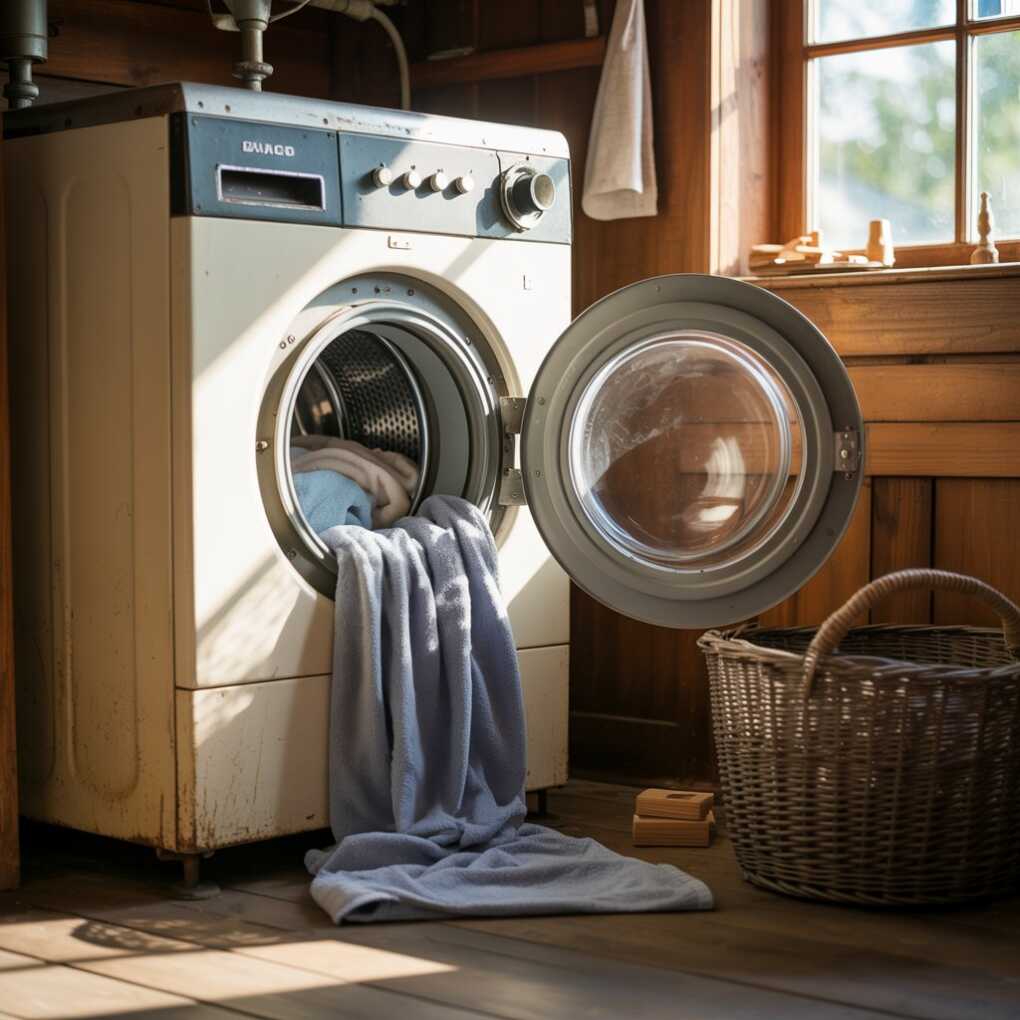There’s nothing quite like the convenience of a reliable clothes dryer, especially on those rainy Vancouver days when hanging laundry outside just isn’t an option. But when your dryer suddenly stops spinning, leaving you with a pile of damp clothes and a growing sense of annoyance, it can throw your whole routine off track. If you’re in North or West Vancouver or the surrounding areas, specialists in appliances north Vancouver are just a call away, offering high-quality repair services to get your appliance back in action quickly and efficiently. These folks know their way around all major brands and can diagnose issues that might stump the average homeowner.
In this in-depth look, we’ll explore the various reasons why a dryer might refuse to spin, drawing from common experiences and expert insights. I’ve dealt with my share of appliance woes over the years, and let me tell you, a non-spinning dryer is often more of a puzzle than a catastrophe. Sometimes it’s a simple fix you can handle yourself; other times, it’s a sign of deeper wear and tear. We’ll break it down step by step, covering everything from mechanical failures to user habits, and include some practical tips to help you troubleshoot or prevent problems. By the time you’re done reading, you’ll feel more empowered to tackle—or at least understand—this frustrating issue.

Understanding the Basics: How a Dryer Spins
Before we jump into the causes, it’s helpful to have a quick primer on how a dryer actually works. At its heart, a dryer is a combination of heat, air circulation, and mechanical motion. The spinning drum tumbles your clothes, exposing them evenly to hot air that evaporates moisture. This motion comes from an electric motor that drives a belt looped around the drum. Supporting elements like rollers and pulleys keep everything smooth and balanced. If any part of this system falters, the drum can grind to a halt.
Electric dryers plug into a 240-volt outlet, while gas models use natural gas or propane for heating but still rely on electricity for the motor and controls. Safety features, like thermal fuses and door switches, are built in to prevent accidents. Lint buildup is the enemy here, as it can clog vents and overwork components. Knowing this setup makes troubleshooting feel less intimidating—like piecing together a familiar jigsaw.
To visualize this, imagine a simple schematic: a cylindrical drum in the center, encircled by a looped belt connected to a motor at the bottom. Rollers sit like small supports underneath the drum, and a pulley adds tension to the belt. This mental picture helps when you’re poking around inside the machine later.
Common Cause #1: A Broken or Worn Drive Belt
One of the top reasons a dryer stops spinning is a faulty drive belt. This is essentially a long, flexible loop of rubber (sometimes reinforced with fabric) that connects the motor to the drum. As the motor turns, it pulls the belt, which in turn rotates the drum. Over time—say, after five to ten years of regular use—the belt can stretch, crack, or snap completely. Heat from the dryer accelerates this wear, and if you’ve been overloading the machine with heavy loads like blankets or jeans, it speeds up the process even more.
You’ll often notice clues before total failure. Maybe the dryer makes a strange slapping sound, or you hear the motor humming but see no movement in the drum. In my experience, this happened once with an old Whirlpool model I had; I ignored a faint noise for weeks, and bam—one day, no spin. To check, unplug the dryer and remove the access panel (usually at the back or front—check your user manual). Look for the belt: if it’s loose, frayed, or lying in pieces at the bottom, that’s your culprit.
Replacing a drive belt is a doable DIY project if you’re handy. Parts cost around $10 to $30, and you’ll need basic tools like a screwdriver and perhaps a putty knife to pop off panels. Route the new belt according to the diagram often found inside the dryer or online. But here’s a word of caution: if the belt broke due to another issue, like a seized pulley, you’ll just end up replacing it again soon. If this sounds overwhelming, professionals from services like northvancouverappliances.ca can handle it swiftly, ensuring the job is done right with quality parts that match your model.
Think of the belt like a bicycle chain: if it jumps off or breaks, the pedals spin uselessly. In dryer terms, that means wet clothes stay wet.
Common Cause #2: Worn-Out Drum Rollers or Glides
Next up are the drum rollers, those small wheels that support the weight of the drum as it spins. Most dryers have two to four rollers at the rear, and sometimes glides or pads at the front. They’re like the tires on your car—constant rotation and friction wear them down over time. When they flatten, crack, or lose their bearings, the drum can’t turn smoothly and might stop altogether. This is especially common in high-use households, where the dryer runs multiple loads a day.
Symptoms include a thumping or rumbling noise during operation, which might start subtle and grow louder. Eventually, the resistance becomes too much, and the motor can’t overcome it. To inspect, you’ll need to disassemble the dryer: remove the drum by releasing the belt tension and lifting it out. Spin the rollers by hand—they should roll freely without wobbling or grinding. If not, replace them in sets to maintain balance; uneven wear can cause vibrations that damage other parts.
I’ve seen this issue pop up in colder climates like ours in Vancouver, where people dry more clothes indoors during winter, putting extra strain on these components. Replacement kits are affordable, around $20 to $50, but the disassembly can be fiddly. If you’re not up for it, calling in experts ensures no further damage during the process.
Picture the rollers as little carts holding up a heavy barrel—if one wheel locks, the whole thing stalls.
Common Cause #3: Faulty Idler Pulley or Tensioner
The idler pulley is an unsung hero in the dryer’s mechanics. It’s a small wheel attached to a spring-loaded arm that keeps the drive belt taut. Without proper tension, the belt slips, and the drum won’t spin. Over years, the pulley’s bearings can dry out, seize, or wear away, or the spring might lose its bounce. This often happens alongside belt issues, as they’re interconnected.
You might hear a squeaking or squealing sound first, like a belt slipping on a fan in an old car. To diagnose, access the belt area and check if the pulley spins freely. If it’s stiff, apply a bit of high-temperature lubricant as a temp fix, but replacement is usually better. Parts are cheap, under $20, but getting to it requires similar steps as belt replacement.
In busy homes, lint and debris can gum up the pulley, accelerating failure. Regular cleaning helps, but if it’s already gone, a pro repair service can swap it out and check for related problems.
Envision it as a tightrope walker’s pole keeping balance—if the tension fails, everything wobbles to a stop.
Common Cause #4: Motor Problems
If the motor itself is the issue, that’s a bigger deal. The motor powers the drum’s rotation and often the blower fan too. It can fail from overheating, electrical surges, worn brushes (in some models), or just old age. Pests like mice sometimes chew through wires, adding an unexpected twist.
Signs? The dryer might hum but not start, or do nothing at all. Use a multimeter to test for continuity in the windings—readings should be in the low ohms range. Capacitors, which help start the motor, can also fail and mimic motor issues.
Replacement motors run $100 to $200, plus labor. This is rarely a beginner DIY, as it involves wiring and heavy lifting. In areas with fluctuating power like parts of West Vancouver, surge protectors are a smart preventive measure.
The motor is the engine; without it firing properly, no motion happens, much like a car that cranks but won’t turn over.
Common Cause #5: Blown Thermal Fuse or Overheating Safeguards
Dryers have built-in safety nets, like the thermal fuse, which blows if temperatures get too high to prevent fires. This can stop the motor and thus the spin. Common triggers? Clogged vents full of lint, restricting airflow and causing heat buildup.
The fuse is a small, white plastic component near the blower or exhaust. Test it with a multimeter—no continuity means it’s blown. Replacement is easy and cheap, but fix the vent first: clean it thoroughly with a brush kit, and check the outdoor flap for blockages. In Canadian winters, ice can form there, worsening things.
Ignoring this can lead to repeated failures or worse. Always prioritize vent maintenance—it’s a fire hazard otherwise.
Think of the fuse as a circuit breaker for heat: it trips to save the day, but you have to address why it got too hot.
Common Cause #6: Door Switch Malfunction
The door switch ensures the dryer only runs when closed. If it’s faulty, dirty, or misaligned, the machine thinks the door is open and won’t spin. It’s a simple mechanism, often a plunger that clicks when pressed.
Clean around it, or test by manually depressing it (unplugged, of course). Replacements are under $10 and snap in easily.
It’s like a light switch for safety—broken, and the whole system stays off.
Common Cause #7: Control Board or Electrical Issues
Rarer but possible, the control board—the electronic brain—can fail from surges or defects, disrupting signals to the motor. Symptoms are erratic: sometimes it works, sometimes not.
Boards cost $150+, and diagnosis requires process of elimination. Power problems, like a faulty outlet or cord, can mimic this—test with a voltmeter.
Overloading the dryer is a user error: too much weight binds the drum. Keep loads to 3/4 full max.
Imagine the board as a computer motherboard; a glitch halts commands.
DIY Troubleshooting and Safety Tips
Start simple: check power, door, lint filter. Run empty—if it spins, overloading’s likely. For deeper checks, gather tools: multimeter, screwdrivers. Always unplug, wear gloves, and avoid gas lines if unsure.
If gas is involved, shut off the supply. Don’t bypass safeties permanently.
Sketch a quick flowchart in your mind: Power on? Door closed? Motor hums? This guides your steps.
When to Call the Pros
If DIY doesn’t cut it, or you’re dealing with gas/electrical complexities, pros are essential. In North and West Vancouver, northvancouverappliances.ca provides high-quality, reliable repairs, often with quick turnaround and warranties. Their appliance repair Vancouver service surrounding areas too, saving you from buying a new unit prematurely.
Preventive Maintenance for Longevity
Clean lint after every load. Vacuum internals yearly. Avoid overloads, balance loads. Have vents professionally cleaned every 1-2 years. Listen for noises early.
Repairing beats replacing for the environment and wallet. Efficient dryers cut energy bills too.
Wrapping It Up
A non-spinning dryer can stem from belts, rollers, pulleys, motors, fuses, switches, boards, or habits. Most fixes are straightforward with knowledge. For tough cases, trust local experts like those at northvancouverappliances.ca to restore your appliance’s spin.
